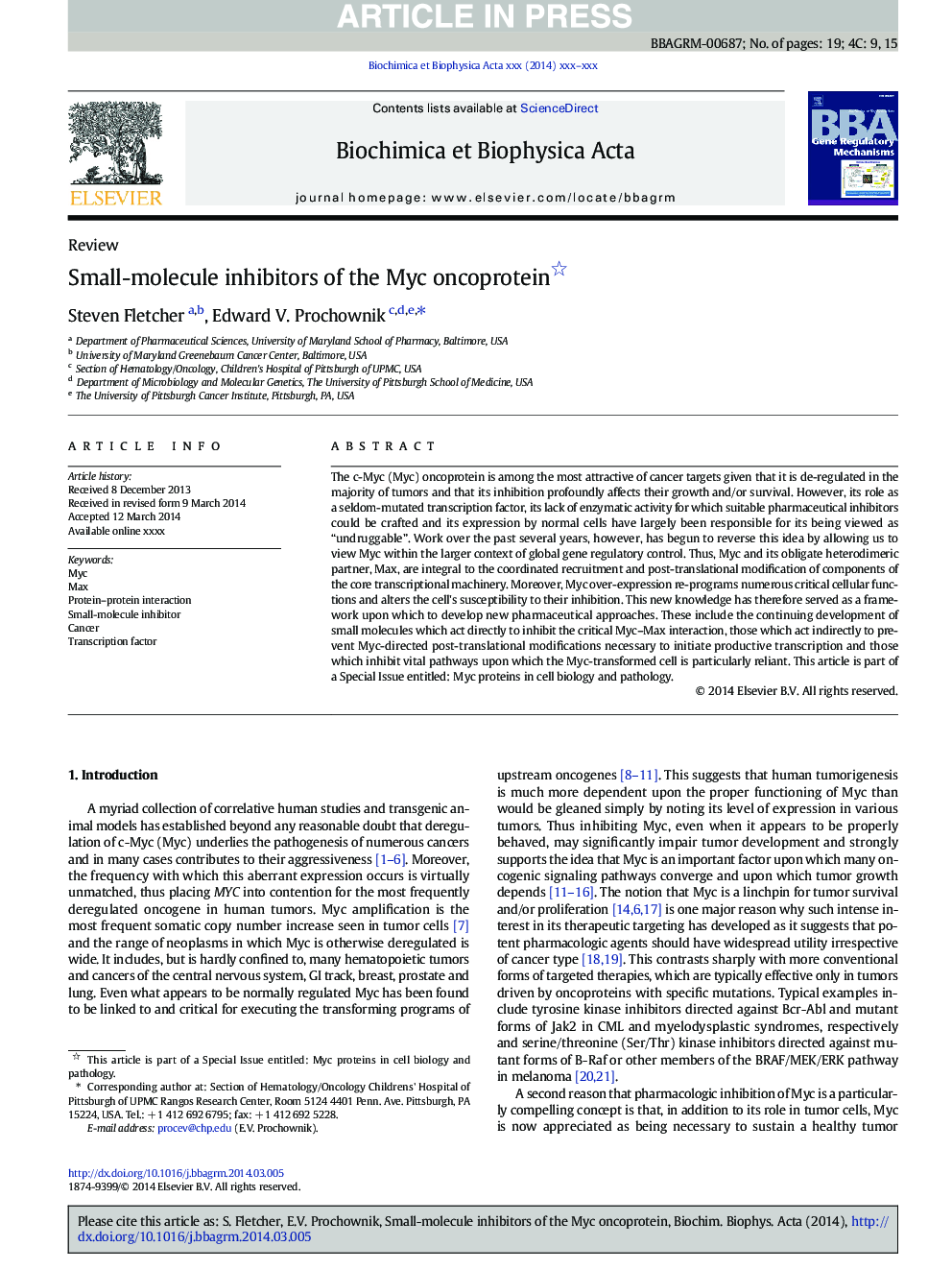| Article ID | Journal | Published Year | Pages | File Type |
|---|---|---|---|---|
| 10798992 | Biochimica et Biophysica Acta (BBA) - Gene Regulatory Mechanisms | 2015 | 19 Pages |
Abstract
The c-Myc (Myc) oncoprotein is among the most attractive of cancer targets given that it is de-regulated in the majority of tumors and that its inhibition profoundly affects their growth and/or survival. However, its role as a seldom-mutated transcription factor, its lack of enzymatic activity for which suitable pharmaceutical inhibitors could be crafted and its expression by normal cells have largely been responsible for its being viewed as “undruggable”. Work over the past several years, however, has begun to reverse this idea by allowing us to view Myc within the larger context of global gene regulatory control. Thus, Myc and its obligate heterodimeric partner, Max, are integral to the coordinated recruitment and post-translational modification of components of the core transcriptional machinery. Moreover, Myc over-expression re-programs numerous critical cellular functions and alters the cell's susceptibility to their inhibition. This new knowledge has therefore served as a framework upon which to develop new pharmaceutical approaches. These include the continuing development of small molecules which act directly to inhibit the critical Myc-Max interaction, those which act indirectly to prevent Myc-directed post-translational modifications necessary to initiate productive transcription and those which inhibit vital pathways upon which the Myc-transformed cell is particularly reliant. This article is part of a Special Issue entitled: Myc proteins in cell biology and pathology.
Related Topics
Life Sciences
Biochemistry, Genetics and Molecular Biology
Biochemistry
Authors
Steven Fletcher, Edward V. Prochownik,
